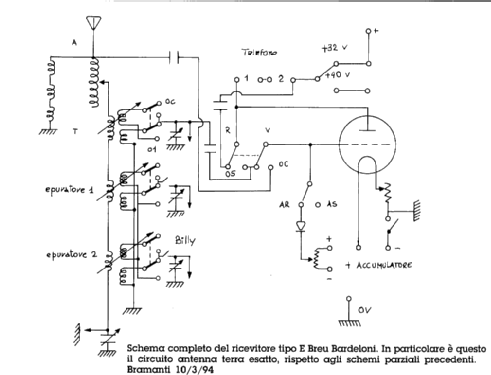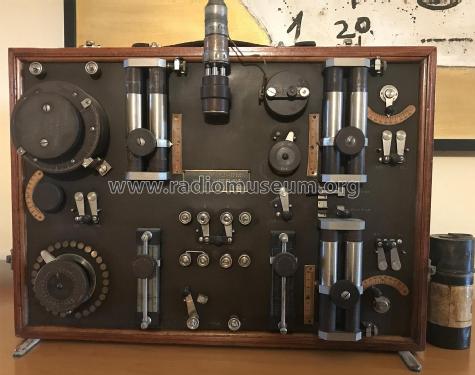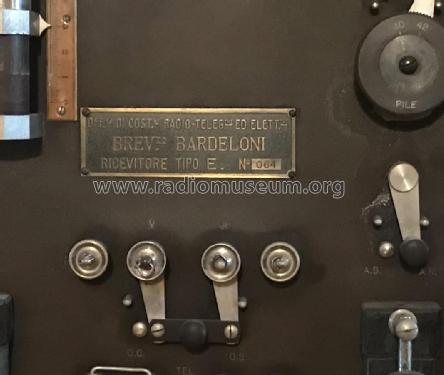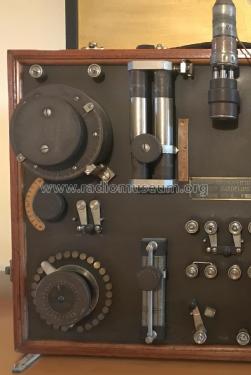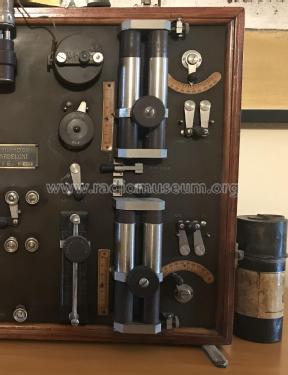Bardeloni Ricevitore Tipo E
MILITARY Italy (different makers for same equipm.)
- Paese
- Italy
- Produttore / Marca
- MILITARY Italy (different makers for same equipm.)
- Anno
- 1915 ?
- Categoria
- Ricevitore militare
- Radiomuseum.org ID
- 305394
Clicca sulla miniatura dello schema per richiederlo come documento gratuito.
- Numero di tubi
- 1
- Valvole
- Principio generale
- Ricevitori speciali
- Tensioni di funzionamento
- Batteria di accumulatori, per tutto (es. autoradio, radio amatoriali)
- Altoparlante
- - Per cuffie o amplificatori esterni
- Materiali
- Mobile in legno
- Radiomuseum.org
- Modello: Bardeloni Ricevitore Tipo E - MILITARY Italy different
- Forma
- Apparecchio portatile > 20 cm (senza la necessità di una rete)
- Annotazioni
-
Prof. Dr. Roberto Guidorzi:
The receiver was designed by Colonel Cesare Bardeloni, an engineer of the Italian Royal Engineer Corps during WW1, probably in 1915.Bardeloni was very interested in the application of radio communication techniques in the military field and most of his research and patents concerned the discrimination of a specific signal against other signals at the same frequency and disturbances.
To this purpose he tested the use of more antennas with different orientations directly inserted in the tuning circuits of a receiver. The “type E” receiver (by the way, it was probably the first radio receiver using an audion produced in Italy) included one of his inventions, i.e. a carborundum rectifier connected to the grid of the audion, endowed with a variable polarization circuit that could help in canceling low level disturbances.
He tested also the application of signals to the audion by means of capacitive links obtained by applying small metal plates to the side of the tube.
- Bibliografia
- Storia della radio in aviazione. Dalle origini al secondo dopoguerra by Giuseppe Pesce
- Autore
- Modello inviato da Heribert Jung. Utilizzare "Proponi modifica" per inviare ulteriori dati.
- Altri modelli
-
In questo link sono elencati 17 modelli, di cui 9 con immagini e 4 con schemi.
Elenco delle radio e altri apparecchi della MILITARY Italy (different makers for same equipm.)
